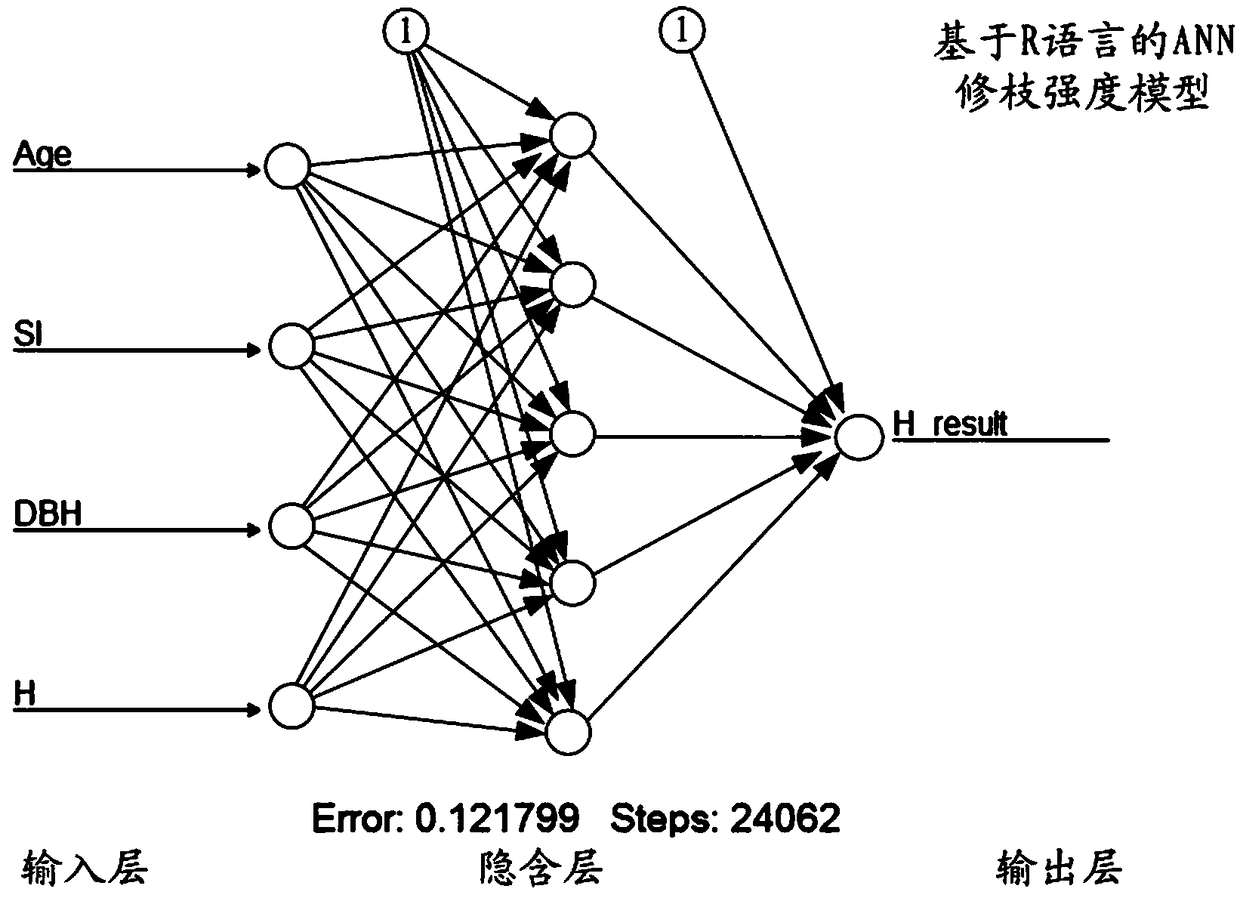Cultivation method for non-node wood of Chinese fir
A cultivation method, the technology of Chinese fir, which is applied in the field of Chinese fir without knots, can solve problems such as lack of determination of the strength of Chinese fir pruning, unsatisfactory timber yield and quality, difficulty in producing fast and mass-produced no-knotted Chinese fir dry wood, etc. To achieve the effect of ensuring porosity, ensuring no knots, and avoiding pruning
- Summary
- Abstract
- Description
- Claims
- Application Information
AI Technical Summary
Problems solved by technology
Method used
Image
Examples
Embodiment 1
[0044] A method for cultivating Chinese fir without knots, comprising the following steps:
[0045]S1, select afforestation land in mountainous areas with fertile soil for afforestation, clear the afforestation land, and reserve;
[0046] The methods of clearing the afforestation land are as follows: ① Ground slope > 30 degrees, it is not suitable to cultivate Chinese fir forests to cultivate good wood without knots; ); ③ ground slope <20 degrees, comprehensive cleaning, conventional alchemy.
[0047] S2, soil preparation
[0048] If 20 degrees ≤ ground slope ≤ 30 degrees, pit-type soil preparation, the length of the pits is 70cm, the width is 70cm, and the depth is 50cm; the row spacing of the pits is 2.0m, and the distance between adjacent pits in each row is 1.5m;
[0049] If the ground slope is less than 20 degrees, the soil should be fully prepared with a depth of 40cm.
[0050] S3, Afforestation and young forest tending
[0051] Seedling selection: excellent clone se...
Embodiment 2
[0064] A method for cultivating Chinese fir without knots, comprising the following steps:
[0065] The steps of S1-S3 are the same as in Example 1.
[0066] S4, pruning
[0067] In the 3rd year after afforestation (that is, the age of the tree is 3 years), the first pruning is carried out, and the number of pruned Chinese firs accounts for 50% of the total number of experimental plants; the intensity of pruning is determined by the ANN model; when the tree is 5 years old, the second pruning The branches were fully pruned, and the pruning intensity was determined by the ANN model; when the tree was 10 years old, the third pruning was carried out, and the pruning intensity was determined by the ANN model; when the tree was 15 years old, the pruning was completed.
[0068] Described ANN model is determined according to the following steps: collect the age (Age), site index (SI), diameter at breast height (DBH), tree height (H) data of Chinese fir to be pruned; The data is an i...
Embodiment 3
[0076] A method for cultivating Chinese fir without knots, comprising the following steps:
[0077] The steps of S1-S2 are the same as in Example 1.
[0078] S3, Afforestation and young forest tending
[0079] Seedling selection: excellent clone seedlings, one-year-old first-grade seedlings; ground diameter ≥ 0.5cm, seedling height ≥ 30cm, root system length ≥ 20cm;
[0080] If 20 degrees ≤ ground slope ≤ 30 degrees, plant Chinese fir in each hole; if the ground slope is < 20 degrees, afforestation is carried out with a row spacing of 2.0 meters and a plant spacing of 1.5 meters; in the first year after afforestation, in March to April During this period, peanuts were planted in the middle of the Chinese fir trees in adjacent rows, and they were tended by knives in September of the same year; then young forest tending was carried out.
[0081] It should be noted that, according to the actual needs, the young forests with grafting and replacement of crowns are used: the crown...
PUM
 Login to View More
Login to View More Abstract
Description
Claims
Application Information
 Login to View More
Login to View More - R&D
- Intellectual Property
- Life Sciences
- Materials
- Tech Scout
- Unparalleled Data Quality
- Higher Quality Content
- 60% Fewer Hallucinations
Browse by: Latest US Patents, China's latest patents, Technical Efficacy Thesaurus, Application Domain, Technology Topic, Popular Technical Reports.
© 2025 PatSnap. All rights reserved.Legal|Privacy policy|Modern Slavery Act Transparency Statement|Sitemap|About US| Contact US: help@patsnap.com

